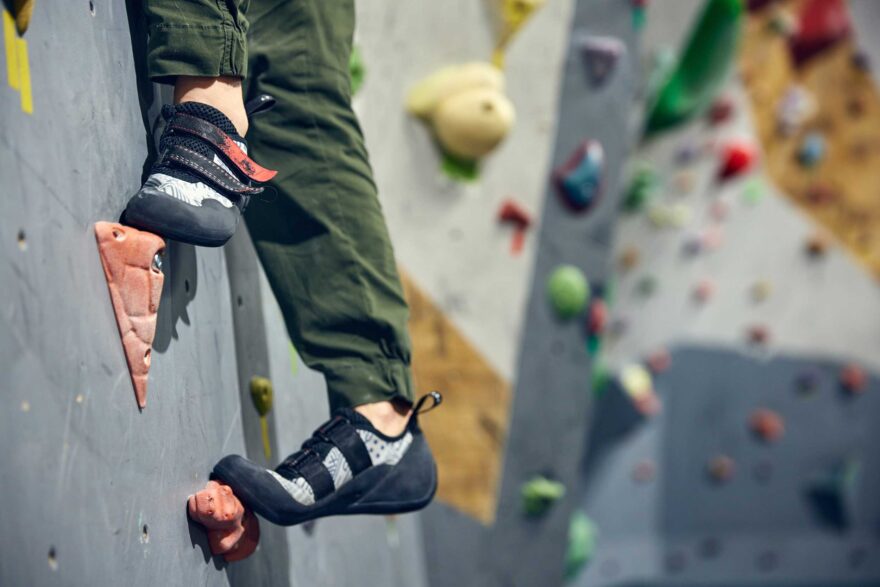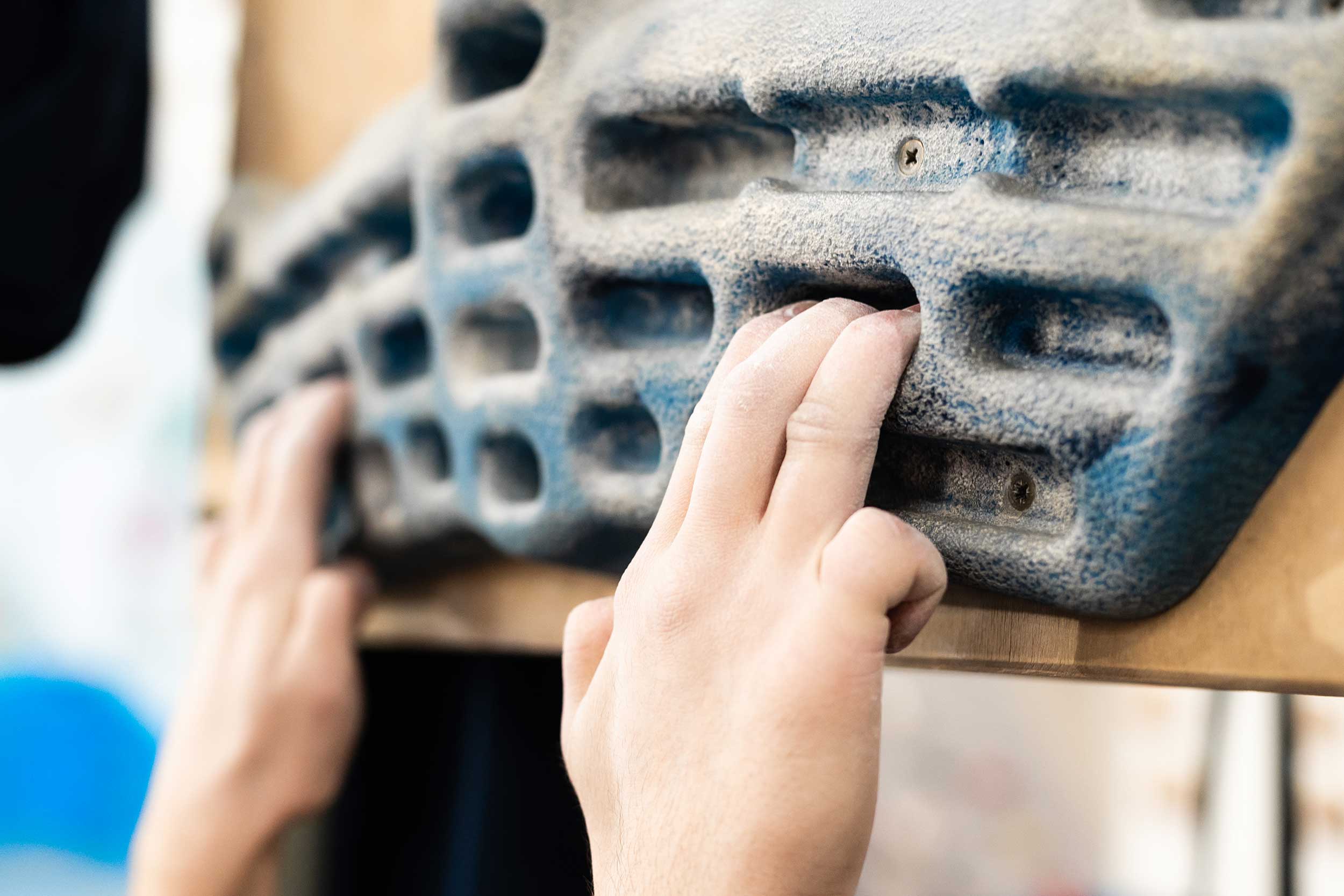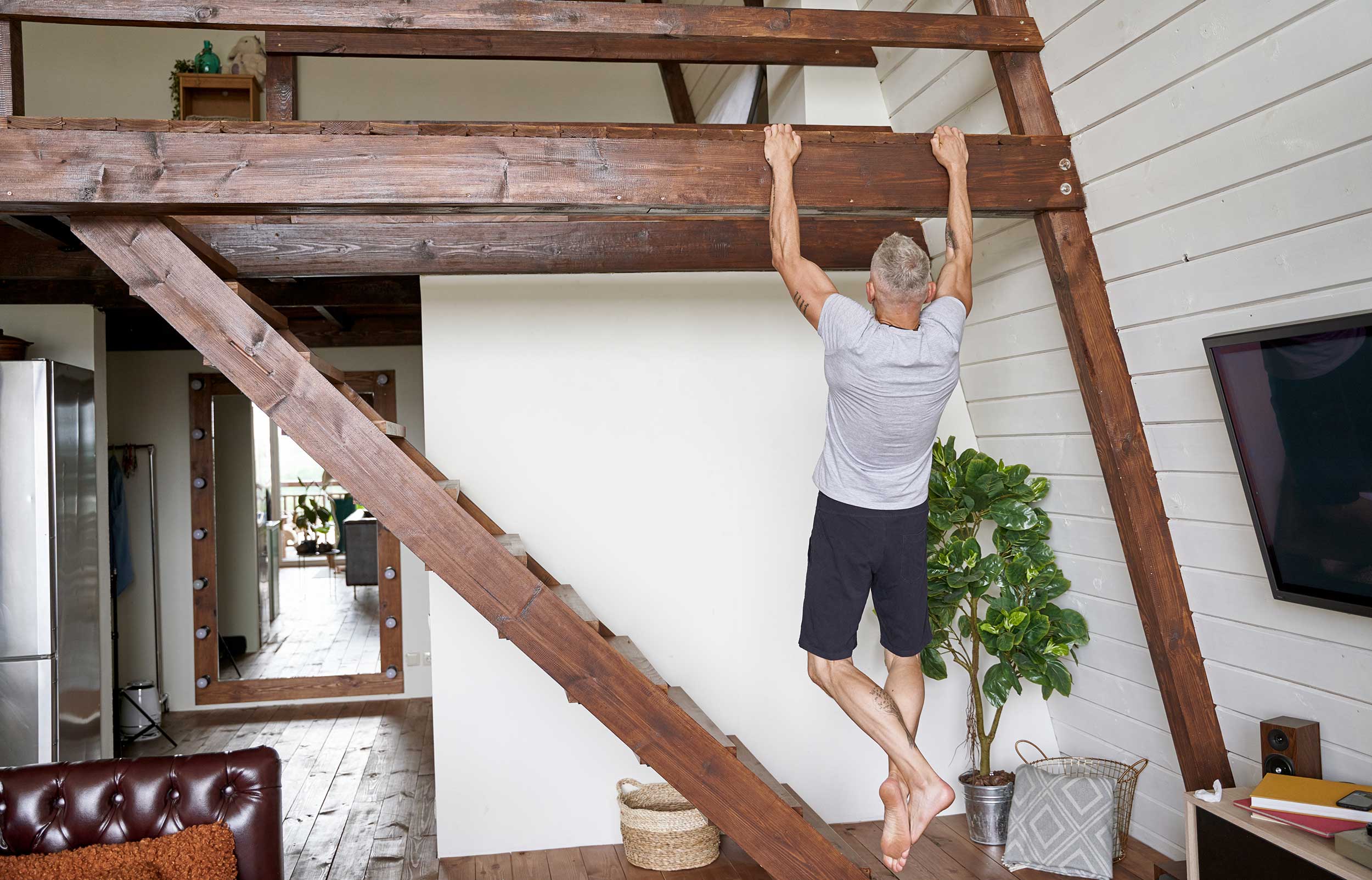
Image by Master1305, Shutterstock
Cold weather is here across most of the U.S., and unless you live near the desert or the Deep South, the time has likely come to retreat inside or move onto winter sports. Because of that, maintaining climbing strength for the next season can be challenging, especially if you do not live near a climbing gym and are not able to practice climbing-specific movement.
Here are some exercises I recommend to keep your climbing strength up for the spring:
Hangboarding
A hangboad is a climbing-specific training tool that uses different sized pockets and climbing holds as well as body weight to strengthen your fingers. As with all exercise, it is important to warm up properly to reduce the chance of injury.

Image by Andrey Orekhov, Shutterstock
Listen to your body as hangboarding can cause major stress on your tendons, especially if you are a beginner. Check out this article from The Daily Crimp for a beginner hangboard training plan.
Step Ups
Good climbing technique requires a lot of leg use. From standing up on one foot to reach the next hold, to jumping explosively for a dyno, leg strength is imperative for rock climbing.
Outside of the traditional squats and lunges of leg day, a step up engages many of the muscles in your legs as well as works on balance and core stability. Learn proper step up technique from this article from Muscle and Fitness and go through this movement slow and controlled to reap the most benefit.
Pull Ups
This may be one of the most obvious training techniques, as pulling up with your arms is a major part of rock climbing. This can be done with a traditional pull-up bar or the largest holds on a hangboard.

Image by Kostiantyn Voitenko, Shutterstock
If you struggle with pull-ups, trying using an assisted pull up machine or start in the bent position and slowly lower to the hanging position (essentially doing a slow lower instead of a pull up). To train different muscles, try pull-ups with varying grips and arm positions such as palms toward you, palms out, or wider and narrower hand placements.
Core/Back Strength
Core and back strength are essential for stability and balance on the wall. From balancing on small foot chips, to holding your body close to the wall on overhangs, these muscles can make or break how well you climb.
There are many different ways to strengthen these muscles but some of my favorites include planks, v snaps and side crunches for my core, as well as lateral pulldowns and suspended rows for my back.
Stuck on what back exercises to try? This article from Healthline has a lot of great options.
Engaging in strength training during the off-season is an essential strategy for rock climbers looking to enhance their skills and maintain peak physical condition. The off-season provides a unique opportunity for climbers to focus on building core stability, grip strength, and muscular endurance without the immediate pressures of climbing-specific goals. By incorporating targeted exercises such as pull-ups, planks, and fingerboard workouts, climbers can address any weaknesses, prevent injuries, and prepare their bodies for the demands of the upcoming climbing season.
If you have access to an indoor climbing wall, balancing your focus on both technique and strength can significantly enhance your climbing abilities. Explore my previous article on climbing techniques and integrate those insights with the strength training strategies discussed here to ensure a successful and rewarding climbing season come spring.
Lauren Loria-Corbat is a writer and photographer who skis, rock climbs, hikes and backpacks. She loves introducing people to outdoor sports through journalism as well as hands-on teaching as a ski and climbing instructor.
 Your Privacy Choices
Your Privacy Choices